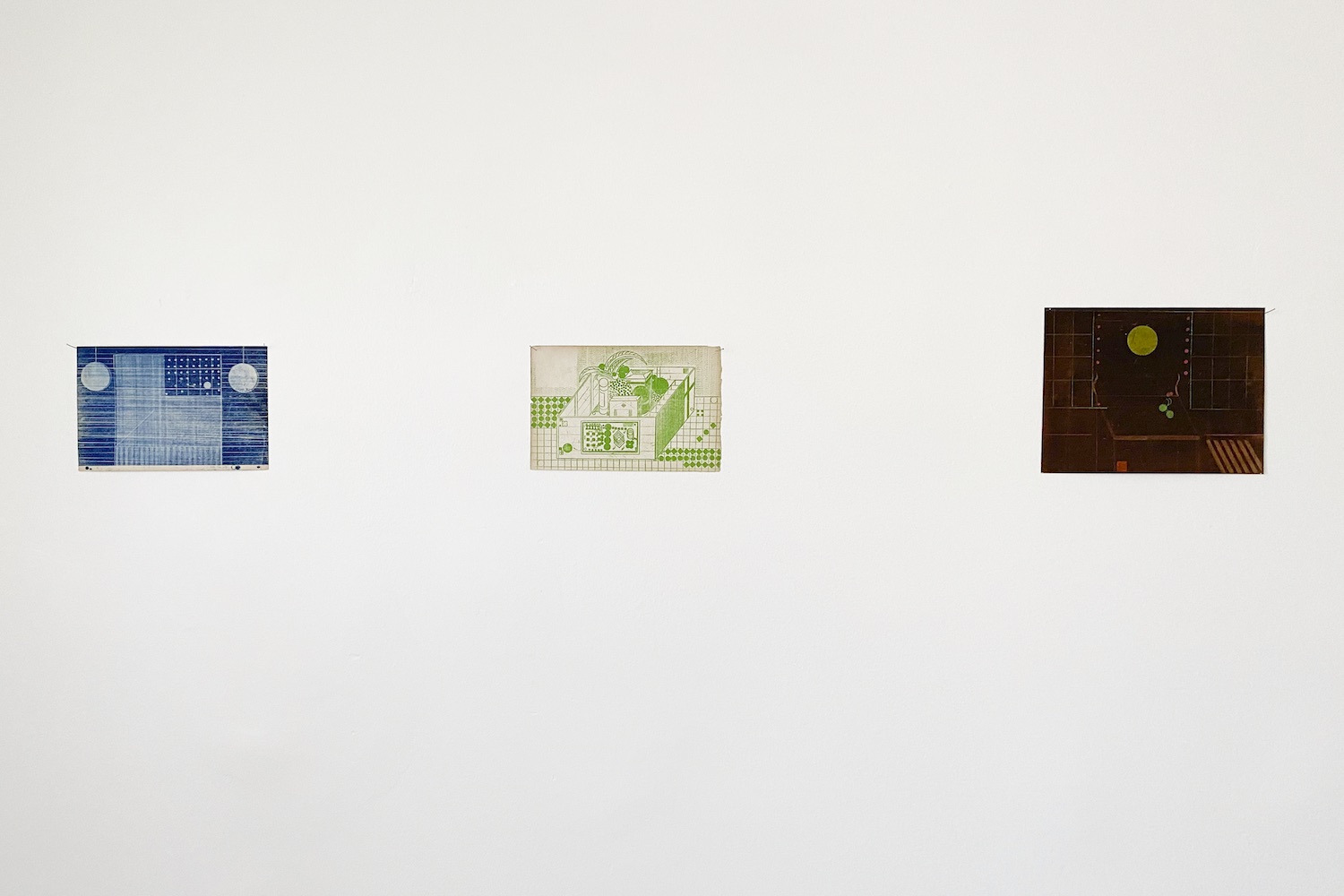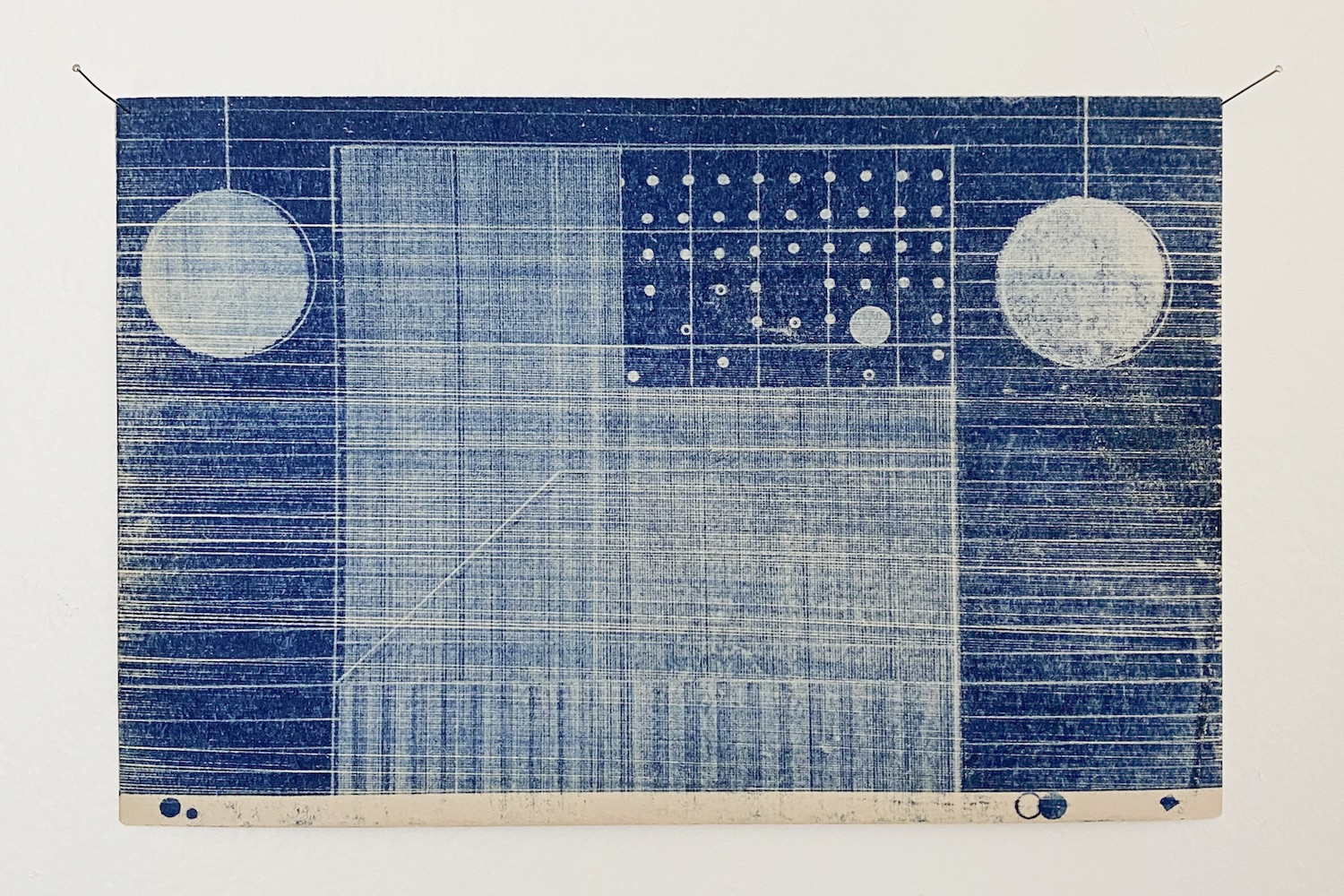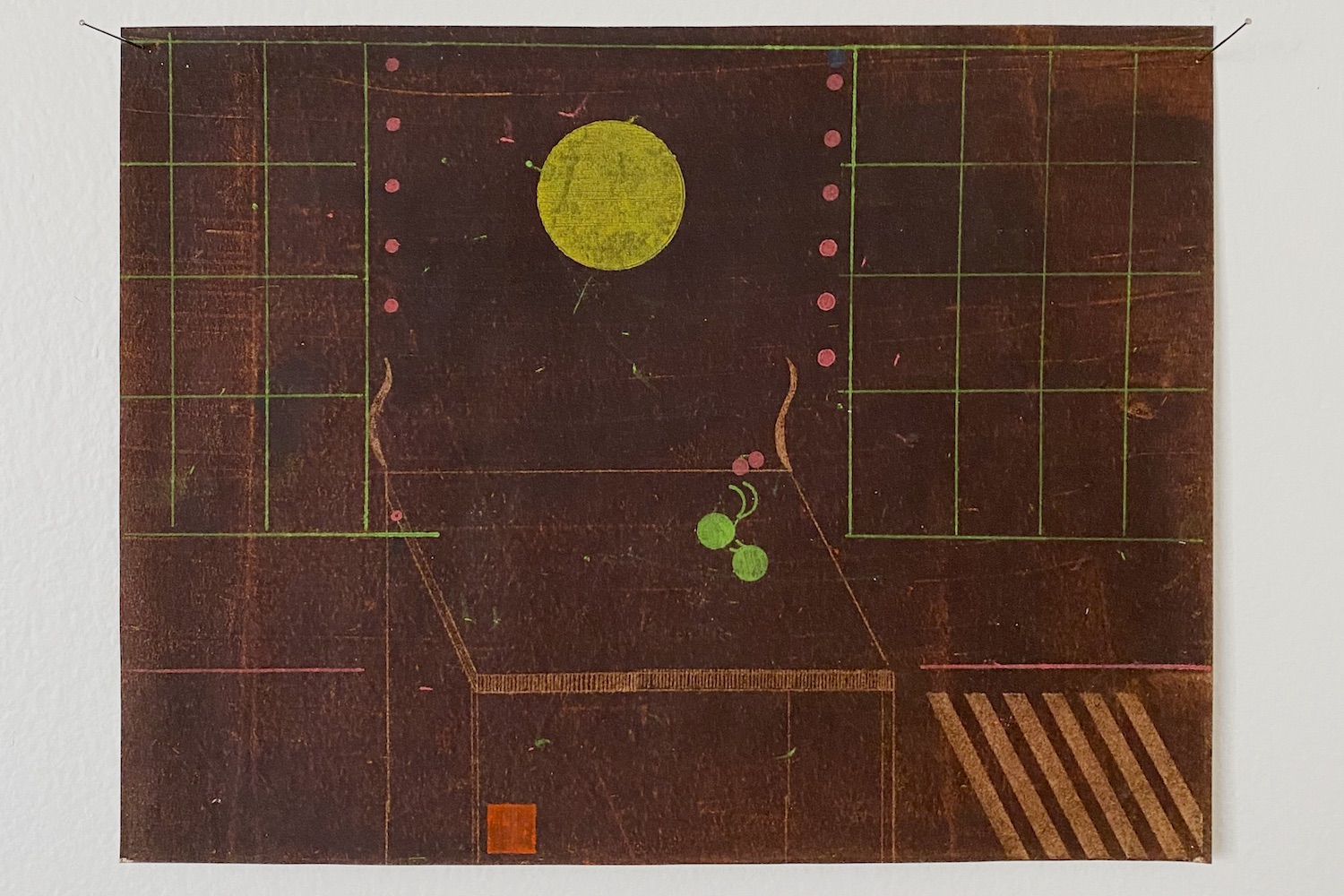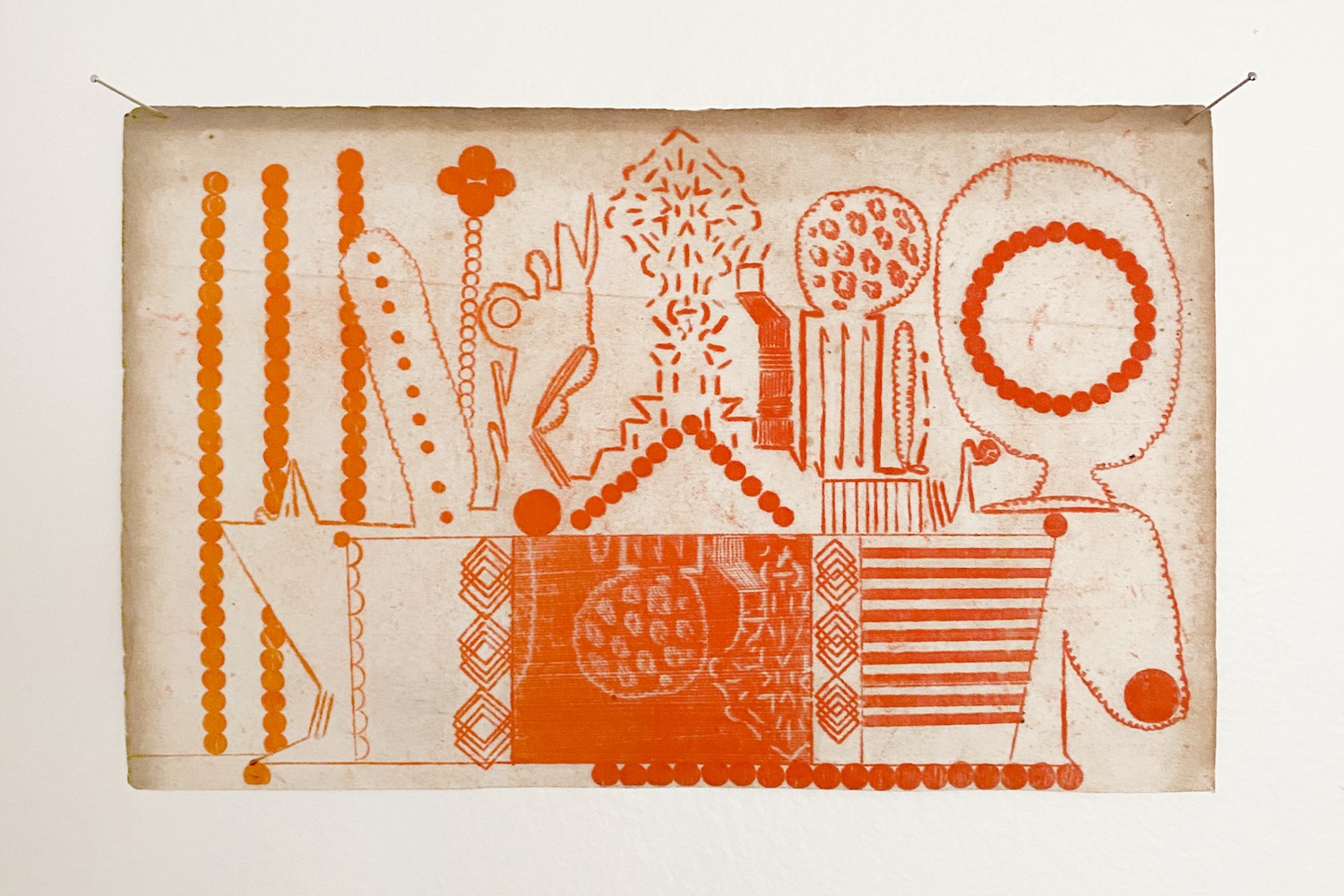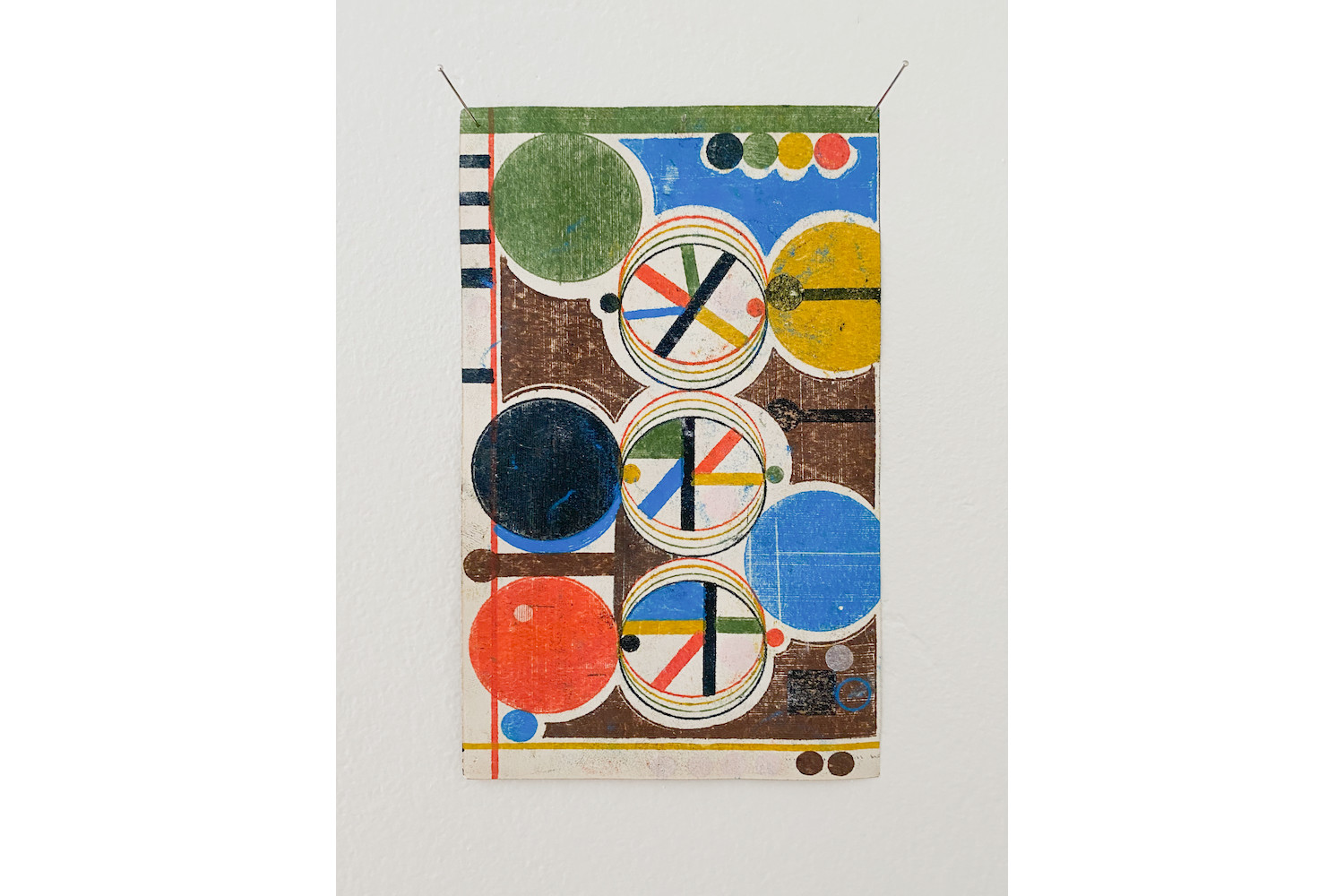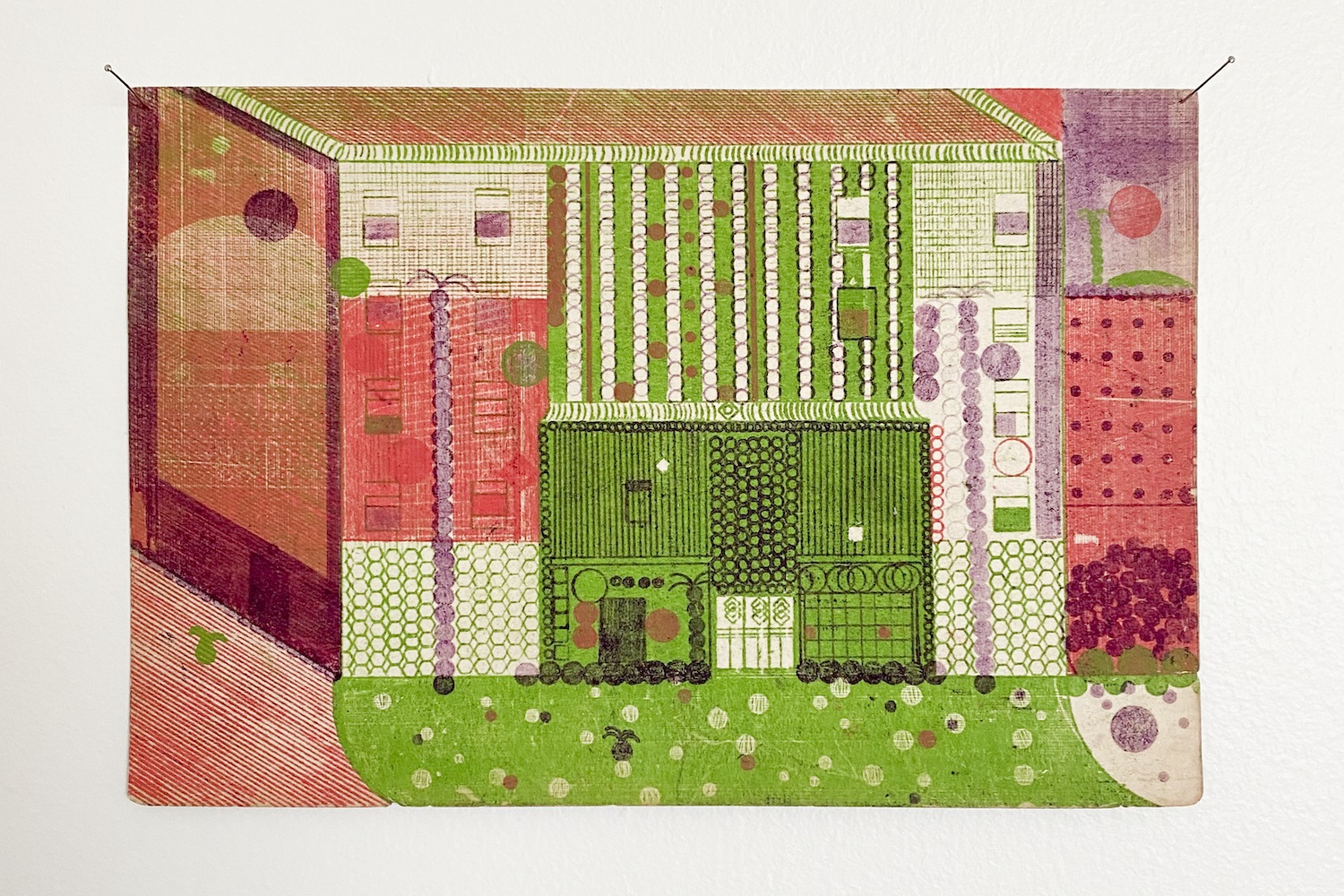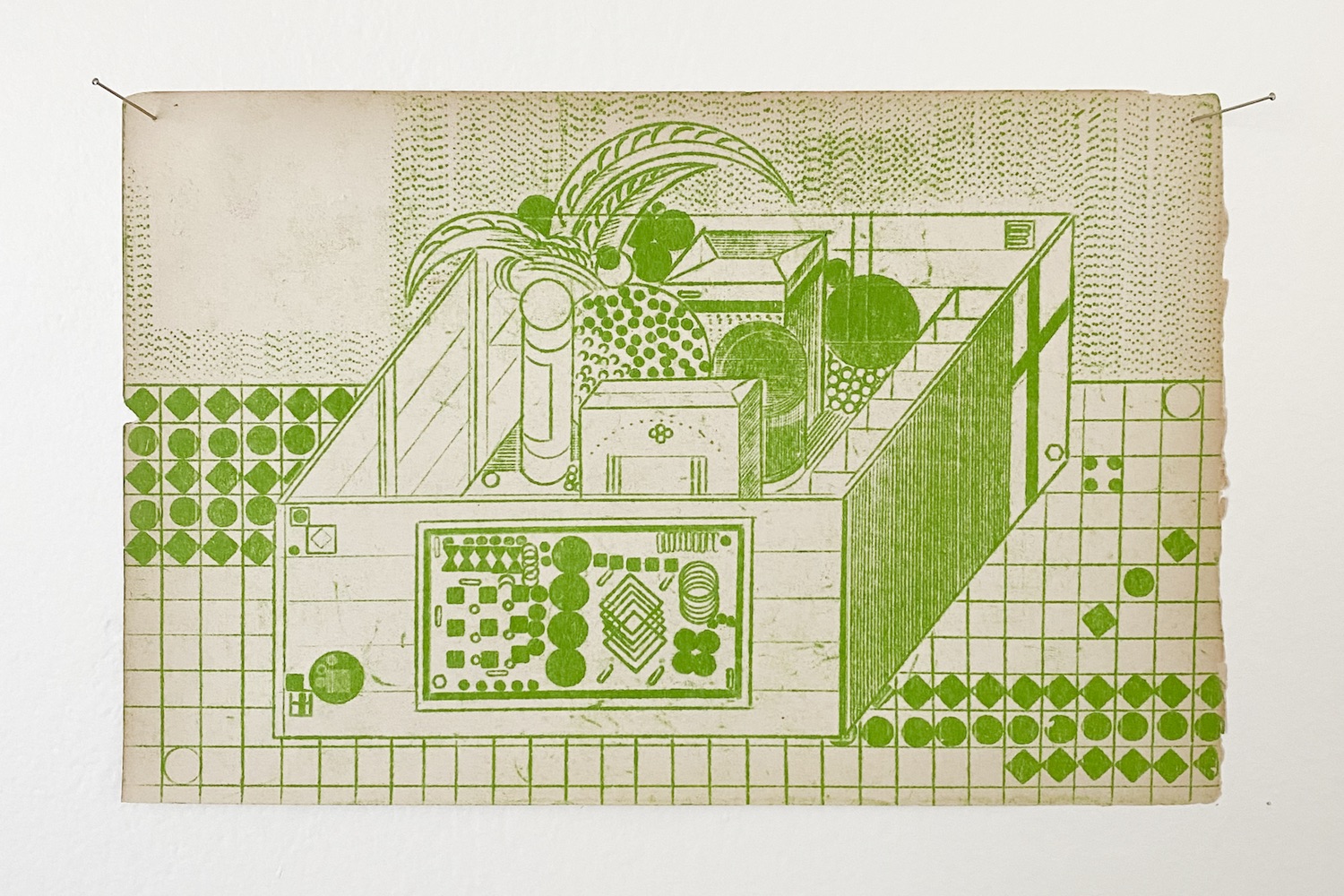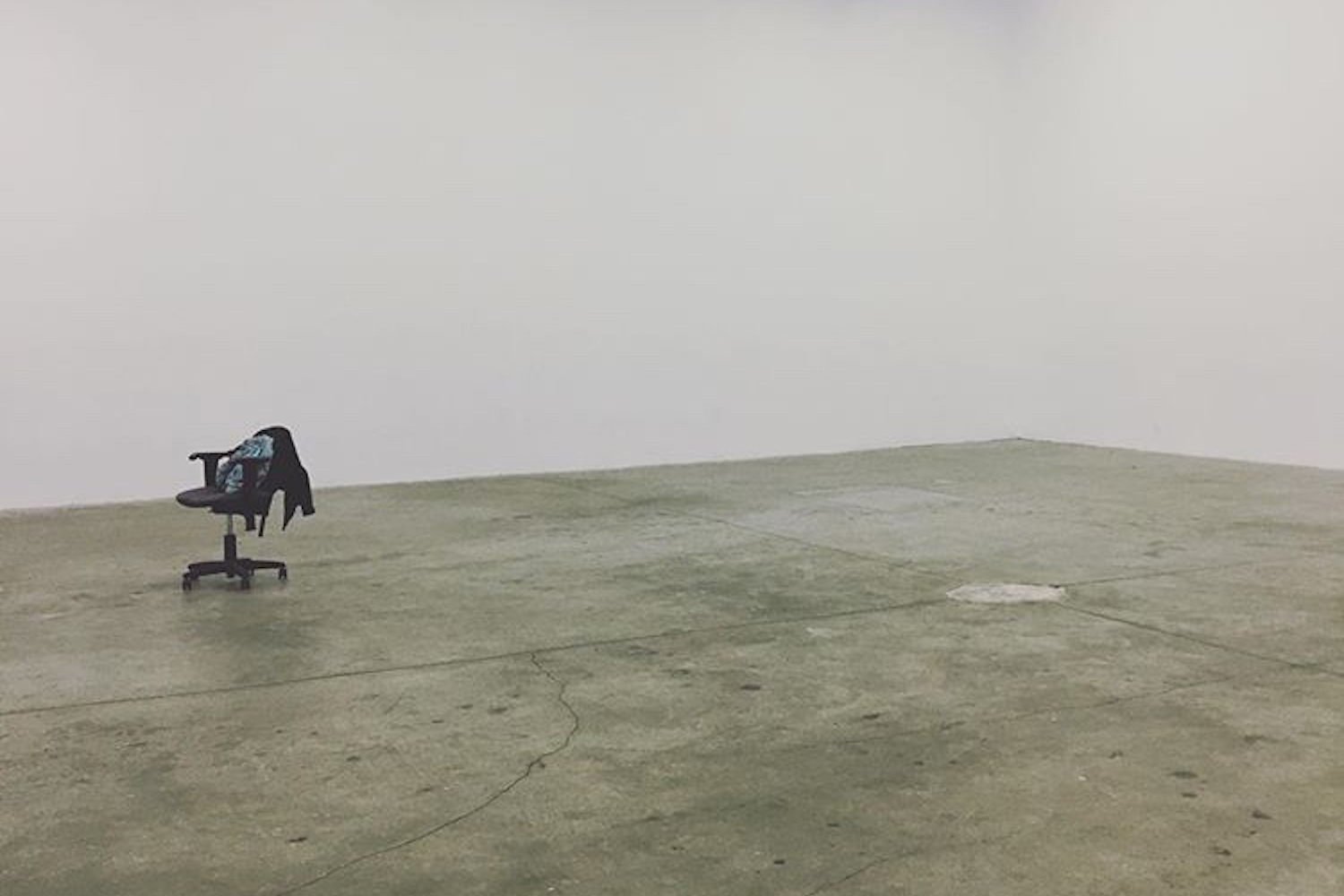“Elegysome” at Feuilleton is Hudson Valley–based artist Sean Sullivan’s first solo exhibition in Los Angeles, marking a quiet yet powerful debut on the West Coast. In it, Sullivan deftly balances a cool analytical approach with instinct. Ten oil paint works on fragile sheets of found paper are pinned to the walls like butterfly wings. None larger than eleven and a half by nine inches, their diminutive scale and delicate quality are determined by their source: old books. These end sheets possess patinas encoded with their own history. Sullivan uses oil paints in a rich palette that recalls an Eames fiberglass swatch book. The works range from representational to abstract, and the artist’s manner of working seems at times restrained, and at others uninhibited. These two contrasting registers create a dynamic tension. His interiors and façades operate within a structure, while his graphic compositions break from order. This dichotomous worldbuilding vacillates between the diagrammatic and expressive, between a sheet of music and the music itself.
Sullivan’s architectural interiors and exteriors employ an underlying grid and rely heavily on repetition. Featuring manmade structures and objects, these environments reflect an anthropological bent to the work, as if we are observing civilizations. The mark-making here is largely guided by tools like rulers, washers, record albums, hand-cut stencils, and pot tops. Brayers, hand rollers typically used in printmaking, enable him to achieve flat fields of color. In Yellow Moon in a Brown Room (all works 2020 unless otherwise indicated), a title that is at the same time poetic and literal, we are placed in an interior looking out onto the night. A flat brown pervades the work, on which green, pink, and red-orange are overlaid. These positive marks are accentuated by negative ones in brown. The green monochrome Ration Box suggests a consistent pattern of alternating dots and diamonds without completing it. Familiar objective forms appear: an orange, tropical palm–like fronds, and a label in a symbolic, coded language. Consisting of the repetition of only a few elements, Room at Night has the texture of a worn architectural blueprint or distressed denim. Symptomatic of our times, all I can see when I look at it is the American flag, between two disco balls, going through a shredder.
His graphic abstractions depend less on repetition and grids. Here he frees himself from the rigidity, rules, and tools that govern his architectonic drawings. Depicting lively organic growth, they are glimpses into the exuberant and impressionistic. Sullivan’s freehand application of marks is crude, a sharp contrast from the refinement of those that are guided. In August, a credenza teems with life. Teal, green, blue, red, yellow, brown, gray, and purple coexist but are not allowed to overlap. Densely packed cursive curlicues, suggestive of language without having any inherent meaning, form a cornucopia basket. An unevenly filled-in brown speech bubble connotes verbal expression. A pea pod opens. Table with Flowers (2019) is a chaotic arrangement with jagged marks and loops that imply movement. Blue sits on top of moss green. Faint gray and pink appear distant in their mutedness.
There are other works that seem to sit between the architectural and the graphic. Looking to the ground, Respite (cool, cool floor) offers a shift in perspective, pared down to the repetition of the dot, a motif that appears again and again throughout the show. Perhaps the most abstract in its subject matter, Sunspots looks like boke or prismatically refracted light. The recurrent faint pink dots suggest a perceptual interest in ghostly afterimages.

